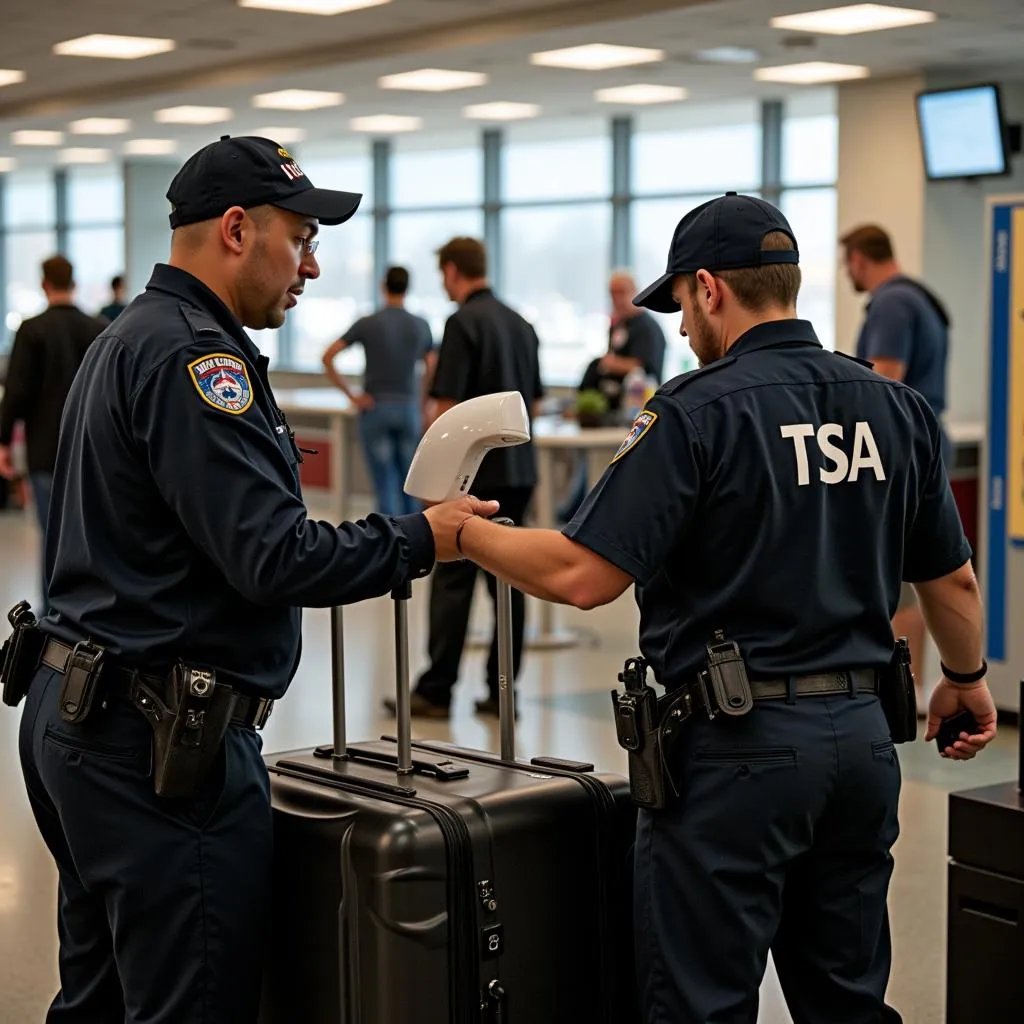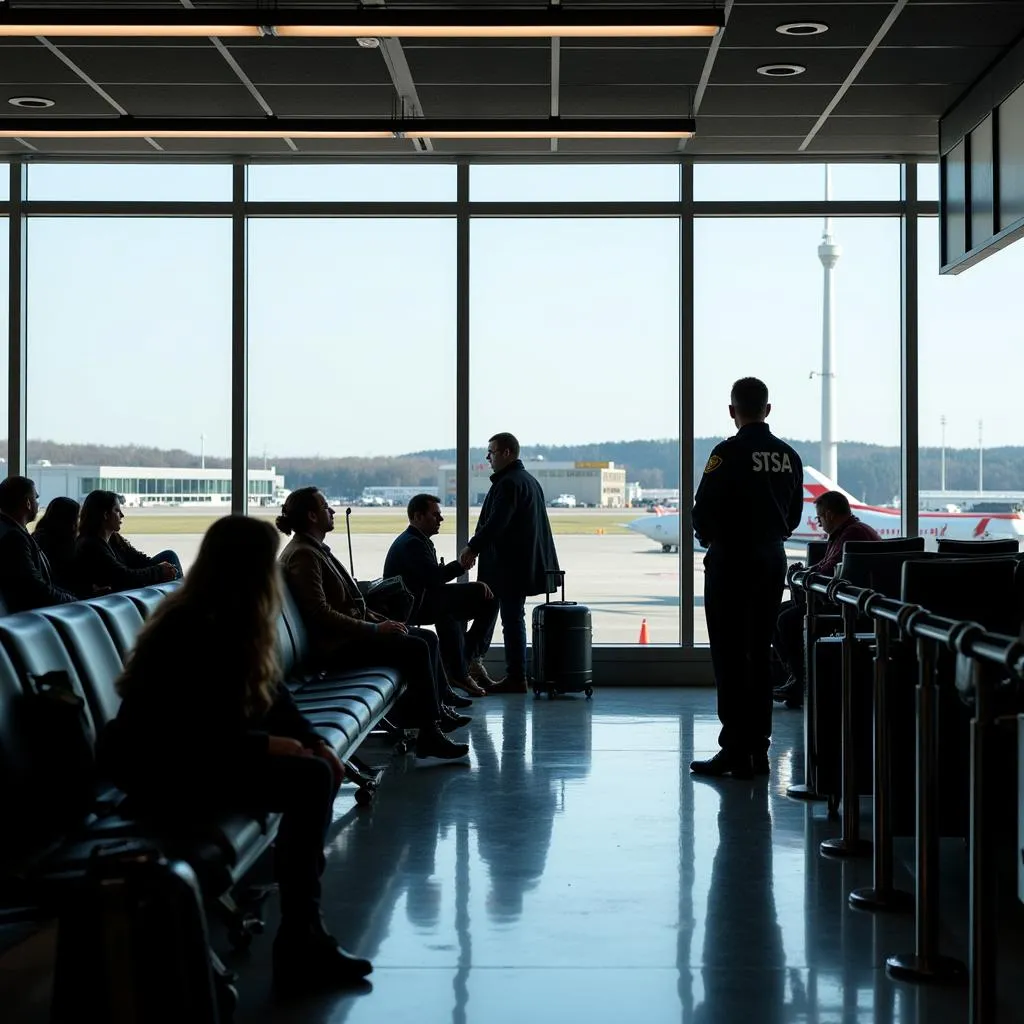The events of September 11, 2001, sent shockwaves across the globe, forever altering the landscape of aviation security. While the attacks directly impacted New York City and Washington D.C., the reverberations were deeply felt at airports nationwide, including Boston Logan International Airport. The date “30 September 2001 Boston Airport” serves as a poignant reminder of the immediate aftermath, a time when airports grappled with heightened security measures and a new reality.
 Boston Logan Airport security checkpoint after 9/11
Boston Logan Airport security checkpoint after 9/11
The days following 9/11 saw an unprecedented surge in security protocols at Boston Airport and others across the United States. The newly formed Transportation Security Administration (TSA) took charge, implementing stringent measures aimed at preventing similar tragedies.
The Immediate Aftermath: A Transformed Travel Experience
The familiar routines of air travel were replaced with a heightened sense of vigilance. Passengers at Boston’s Logan Airport encountered longer lines, more intensive screenings, and a visible increase in security personnel. These changes, while disruptive, aimed to restore a sense of safety and confidence in the wake of the attacks.
- Enhanced Screening Procedures: Metal detectors became standard, and luggage underwent rigorous X-ray scans. Random pat-downs and more thorough baggage inspections became commonplace.
- Federalization of Security: Prior to 9/11, airport security was largely handled by private companies. The creation of the TSA brought about a standardized, federally regulated system across the nation.
- Increased Security Presence: The sight of armed National Guard troops patrolling airport terminals became a stark reminder of the new reality. Air Marshals, undercover federal agents trained to handle onboard security threats, were deployed on flights.
 TSA agents screening passengers at Boston Logan Airport
TSA agents screening passengers at Boston Logan Airport
These measures, while initially met with a mix of apprehension and understanding, gradually became the accepted norm. The attacks of 9/11 fundamentally changed the way we think about airport security, ushering in an era of heightened vigilance and stricter protocols.
The Legacy of 30 September 2001: Enduring Security Enhancements
The impact of 30 September 2001 extends far beyond the immediate aftermath. The events of that day spurred ongoing innovation and adaptation in aviation security. Boston Airport, along with other major hubs, became testing grounds for new technologies and strategies designed to stay ahead of potential threats.
- Advanced Screening Technologies: Full-body scanners, capable of detecting non-metallic objects concealed under clothing, became increasingly common. Biometric identification systems, using fingerprints or iris scans, were introduced to verify passenger identities.
- Intelligence Sharing and Threat Assessment: The TSA’s creation led to improved information sharing between intelligence agencies and airport security personnel. This collaborative approach allows for more effective threat assessment and proactive security measures.
- Passenger Education and Awareness: Airports like Boston Logan have implemented programs to educate travelers about security procedures and encourage them to report suspicious activity. This “See Something, Say Something” campaign empowers passengers to play an active role in maintaining safety.
 Boston Logan Airport departure gate after 9/11
Boston Logan Airport departure gate after 9/11
The legacy of 30 September 2001 is a complex one, marked by both loss and resilience. Boston Airport, like airports around the world, has adapted and evolved to meet the challenges of a post-9/11 world, ensuring the safety and security of millions of travelers each year.

